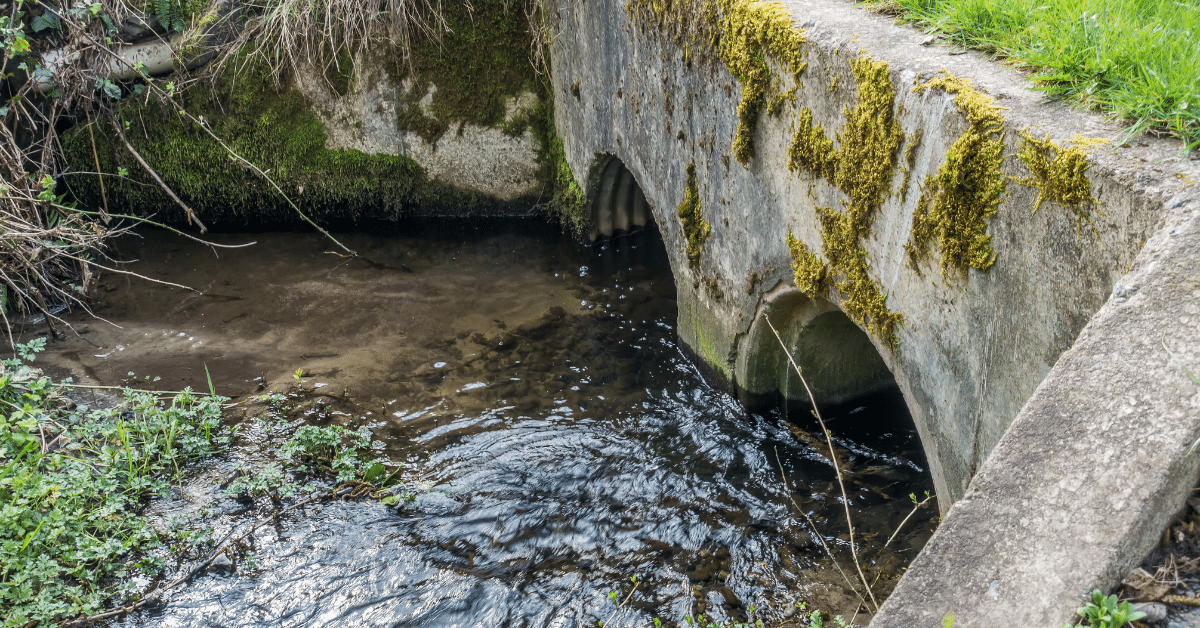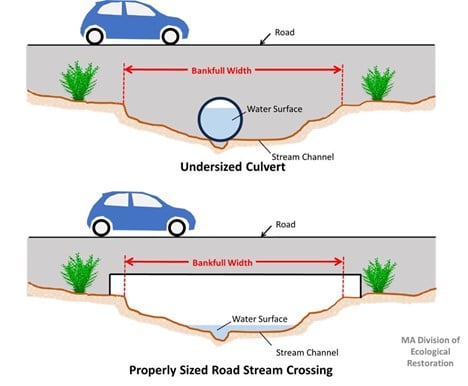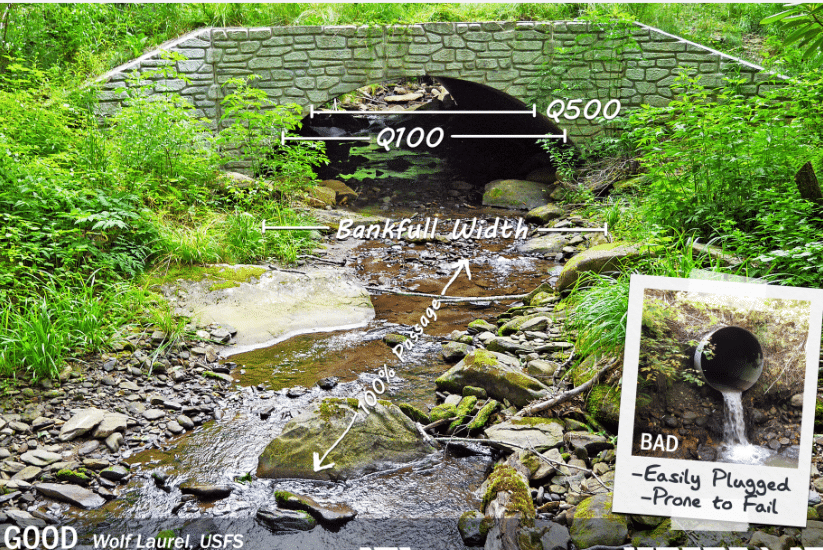
The Importance of Aquatic Wildlife Crossings
An aquatic wildlife crossing is a structure that allows aquatic organisms, such as fish, turtles, or amphibians, to pass through a barrier like a road or a dam. An aquatic wildlife crossing is a human-made structure that allows aquatic animals to safely cross under a road along a stream corridor and are designed to help animals move through landscapes that have been fragmented by human development. Aquatic crossings also ensure the ecological health of rivers and streams and improve the movement of aquatic organisms through multiple habitats.
IMPORTANCE OF WILDLIFE CROSSINGS
Wildlife crossings come in many different forms (bridges, culverts, underpasses, amphibian tunnels, etc.), but the impacts depend on the type of aquatic crossing structure, specifically. For example, structures like bridges not only support aquatic organism passage but also facilitate the movement of terrestrial wildlife. In culverts, they typically act as a drainage passageway for water to cross under the road, which can prevent flooding and erosion. This, however, impacts aquatic species negatively, because their movement can be restricted through these structures. In the case of culverts and bridges, The Southeast Aquatic Resources Partnership (SARP) “estimates that there are more than 5 million potential roadway barriers to Aquatic Organism Passage (AOP) in Southeast U.S.; [j1] of the approximately 120,000 road-related barriers assessed for AOP impacts, nearly 57,000 have AOP impacts (SARP 2023).”
IMPROVEMENT ON AQUATIC CROSSINGS
The improvement of aquatic crossings can be done through AOP projects with names like “bankfull” (water level in a stream corresponding to where water is flowing within the banks just before it spills out into the floodplain) and “stream simulation” or “geomorphic approach” (mimics the natural channel, including shape and function, of the stream). These aim to allow aquatic animals to move through without obstruction.

The use of bankfull width is beneficial for aquatic and terrestrial species. This process considers channel geometry with the natural processes that create bodies of water. Bankfull width has many benefits including but not limited to reducing the risk of flooding caused by structure failure or overtopping, reducing maintenance costs by protecting the structure from erosion and debris blockages, and increasing the lifespan of the structure.

The stream simulation approach is based on the design method of “constructing a channel through a bridge or culvert that mimics the structures and function of the stable natural channel outside of the influence of the road” (U.S. Department of Transportation, Federal Highway Administration, 2024). The use of stream simulation can positively impact aquatic ecosystems by promoting favorable AOP conditions through crossings. Stream simulations have also shown an increase in life expectancy, high flood resiliency, with aquatic organisms having the opportunity for passage at all life stages. Stream simulation benefits terrestrial species, as well, as the provided natural banks provide safe passage away from roads. Well-designed crossings are safer for people and vehicles.
Through bankfull width, stream simulation, and many other design methods, many different wildlife species can utilize the stream and river corridors for movement, shelter, food, and other needs.
WHAT WILD VIRGINIA IS DOING
Wild Virginia is asking state legislators to pass legislation surrounding the Virginia Department of Transportation (VDOT) and other state agencies to incorporate wildlife passage into their infrastructure designs in accordance with the FHWA guidance. Legislation requiring VDOT to secure long-term, diverse funding sources for wildlife crossings will build state capacity, support local projects, and prioritize overburdened communities. Our legislative requests will also include a budget amendment to support current crossing projects in Virginia!
Check out our legislation Fact Sheet for more information!
Throughout these winter months Wild Virginia will have many advocacy efforts so stay tuned!
Work Cited
Oregon Conservation Strategy’s Barriers to animal movement: The Oregon Conservation Strategy is an overarching state strategy for conserving fish and wildlife, while providing a shared set of priorities for addressing Oregon’s conservation needs. The Conservation Strategy brings together the best available scientific information.
U.S. Department of Transportation, Federal Highway Administration’s Aquatic Organism Passage at Highway Crossings FHWA-HIF-24-054: This Aquatic Organism Passage (AOP) Implementation Guide (Guide) supports transformative practices for waterway-transportation crossing design for successful removals of AOP barriers. This Guide does not present a single approach, as there are many approaches. Instead, it provides general principles for successful application allowing flexibility to meet site-specific goals, context, and constraints.